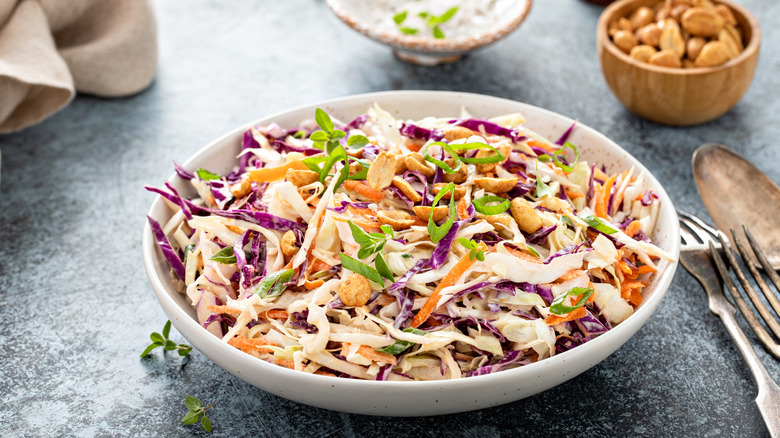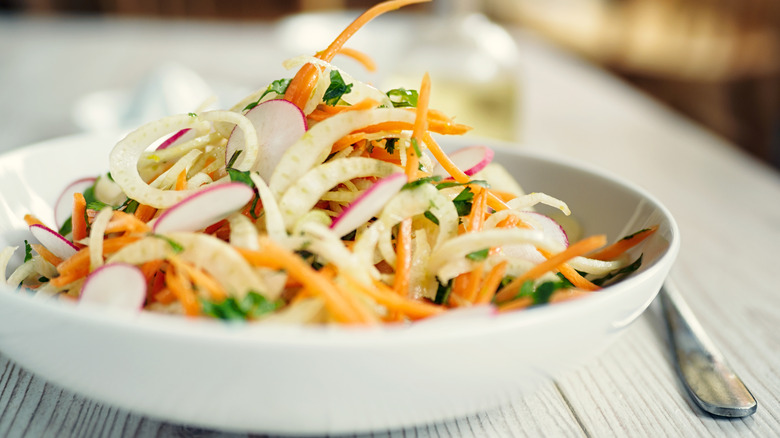The Ridiculously Minor Difference Between Slaw And Coleslaw
Thought slaw was simply a nickname for coleslaw? Believe it or not, there's actually a subtle difference between these two crunchy, colorful, and veggie-forward sides: Coleslaw always contains cabbage, whereas slaw doesn't.
At its most basic, a classic serving of coleslaw is made by mixing shredded cabbage with seasoned mayonnaise. Arguably, the best type of cabbage for coleslaw is green cabbage because it has a mild flavor, inviting crunch, and firm structure that won't collapse under the weight of a rich dressing. However, red cabbage is often used as well for its striking color and pronounced peppery flavor, while savoy cabbage provides an unusual texture and bite. Some coleslaw recipes include root vegetables like carrots and onions or a scattering of scallions for extra color and flavor, but they never omit the foundation of the shredded cabbage.
Slaw, on the other hand, does not have to contain cabbage at all. It can be made with a mix of hardy vegetables, like carrots, raw shredded beets, strips of broccoli, or even grated fennel. The technique is the same — chop raw chopped vegetables and toss them in a dressing — but cabbage is completely omitted from the ingredients list. You might prefer making slaw over coleslaw if you have a sensitive stomach, as cabbage contains a carbohydrate called raffinose, which is known for causing bloating and gas.
Both coleslaw and slaw can be dressed with mayonnaise or a vinaigrette
Both coleslaw and slaw are traditionally made with mayonnaise, but this rich ingredient can easily be substituted for a vinaigrette-style dressing to create a brighter dish that isn't as heavy. Vinaigrettes are made by blending an acid, like lemon juice or vinegar, with oil and seasonings to create a viscous emulsion that clings to the vegetables. Coleslaw and slaw can also contain additions like mustard, minced garlic, and fresh herbs to create layers of flavor, or sweeteners, like maple syrup, to counterbalance the tangy flavor of the vinegar. Why not give a classic coleslaw some sweet heat by drizzling in a little hot honey or stirring through some grated apple? The acid in the dressing will also prevent the apples from browning as quickly, allowing you to make your dish in advance of a cookout or picnic.
To boost the flavor of your slaw or coleslaw, consider shredding whole vegetables yourself instead of buying pre-packaged options. This will lend your dish a fresh flavor and crisp texture that will pair well with barbecued meats and hot dogs.

